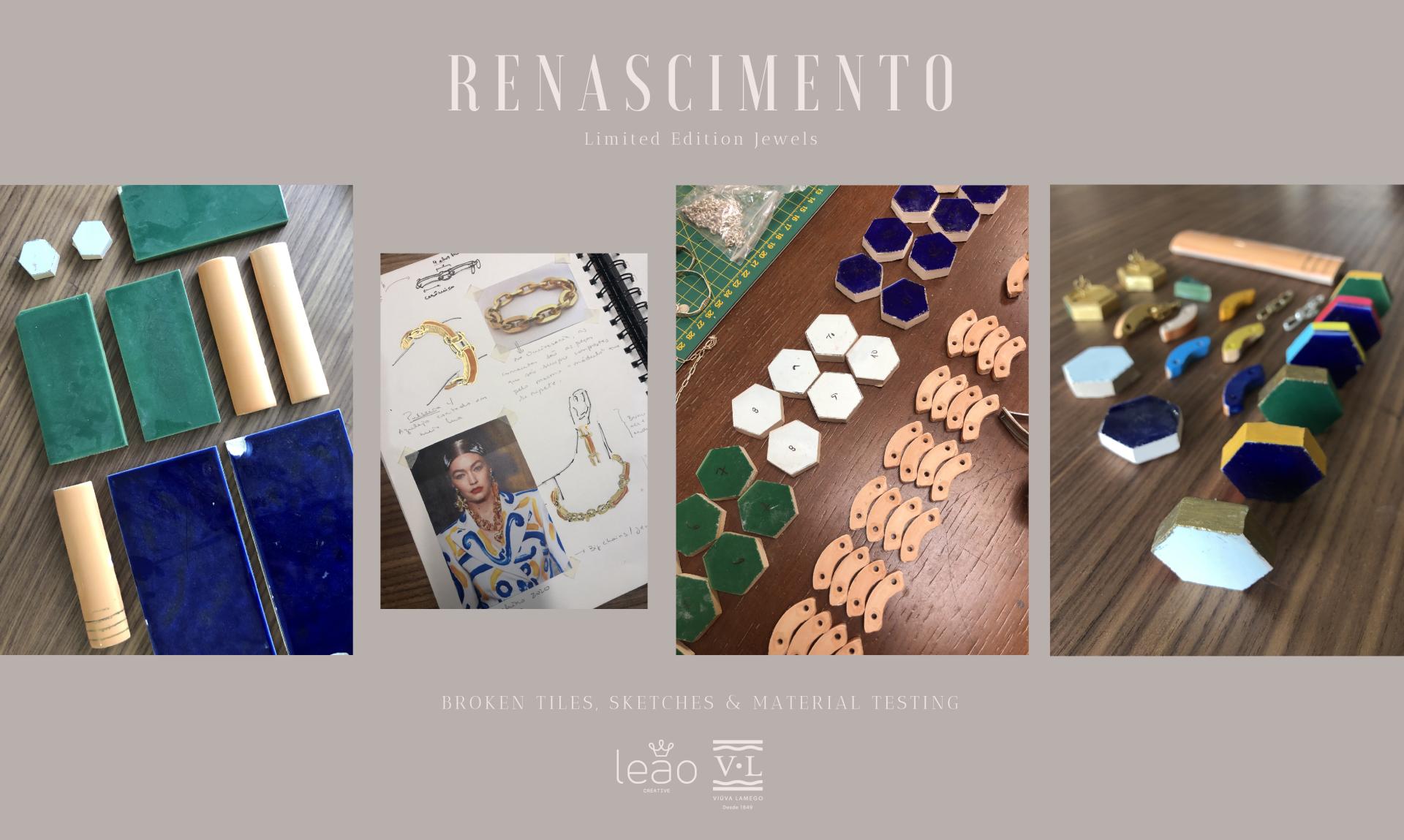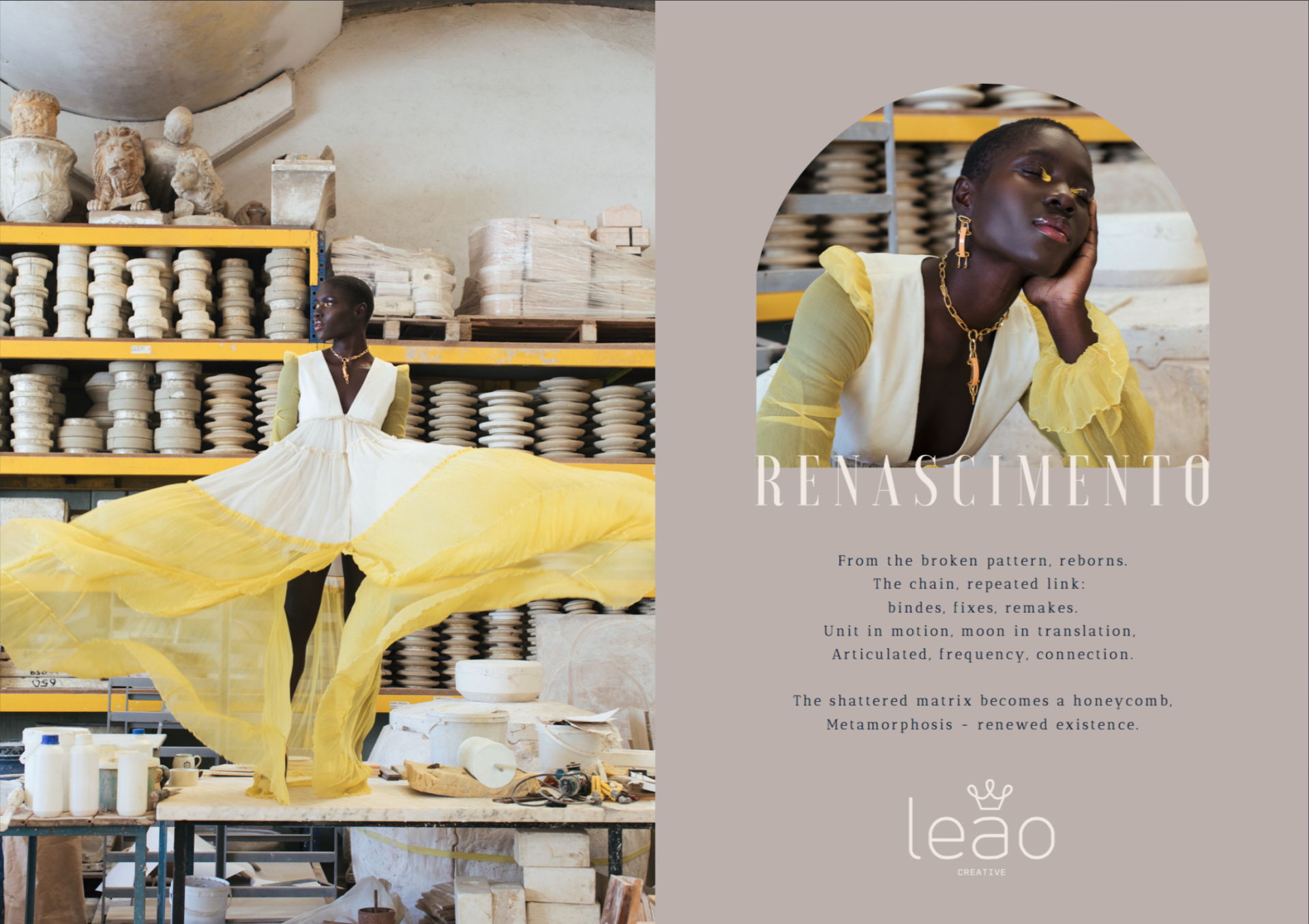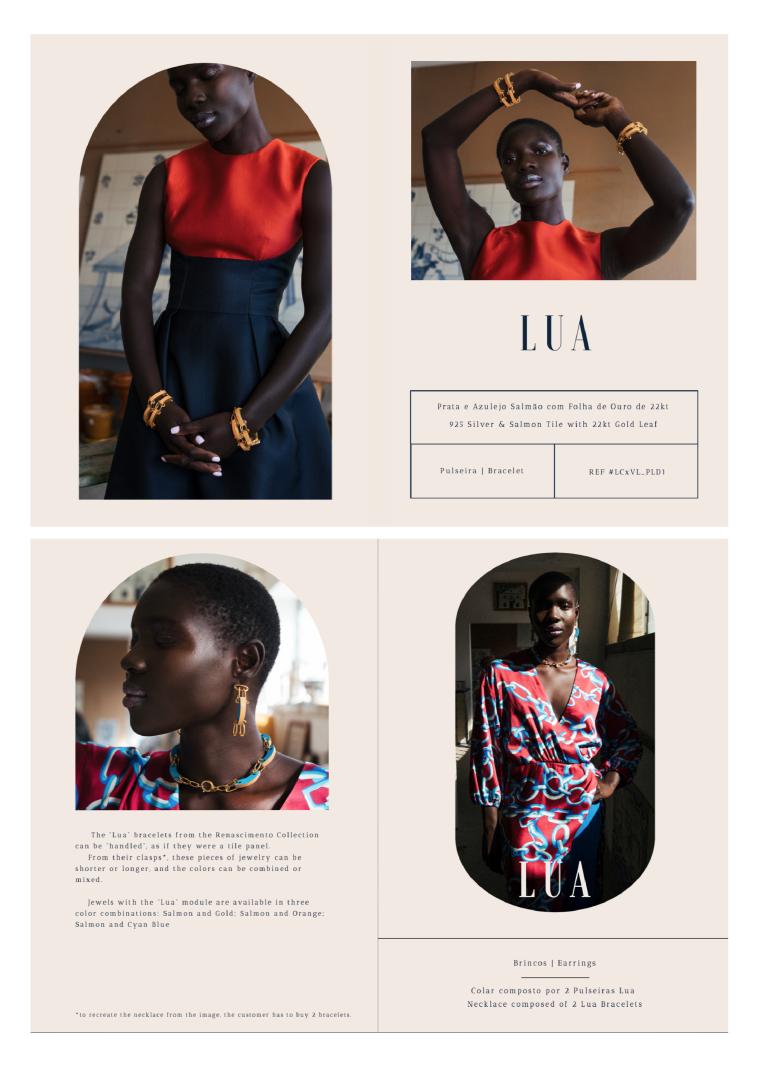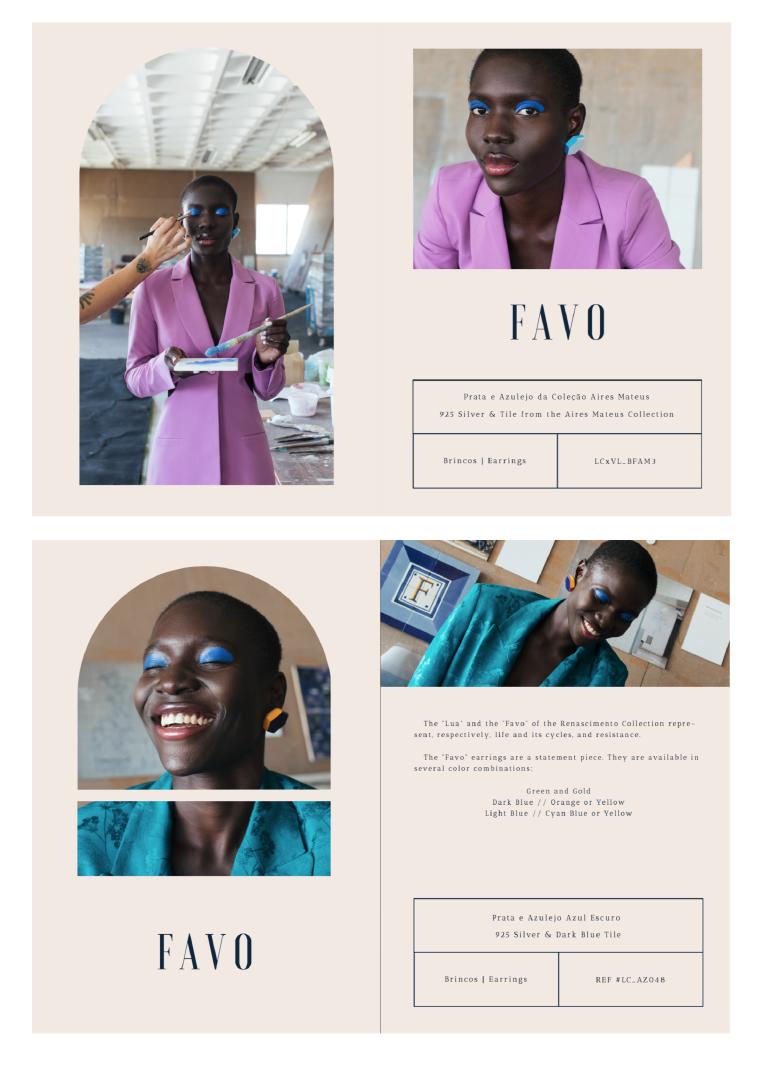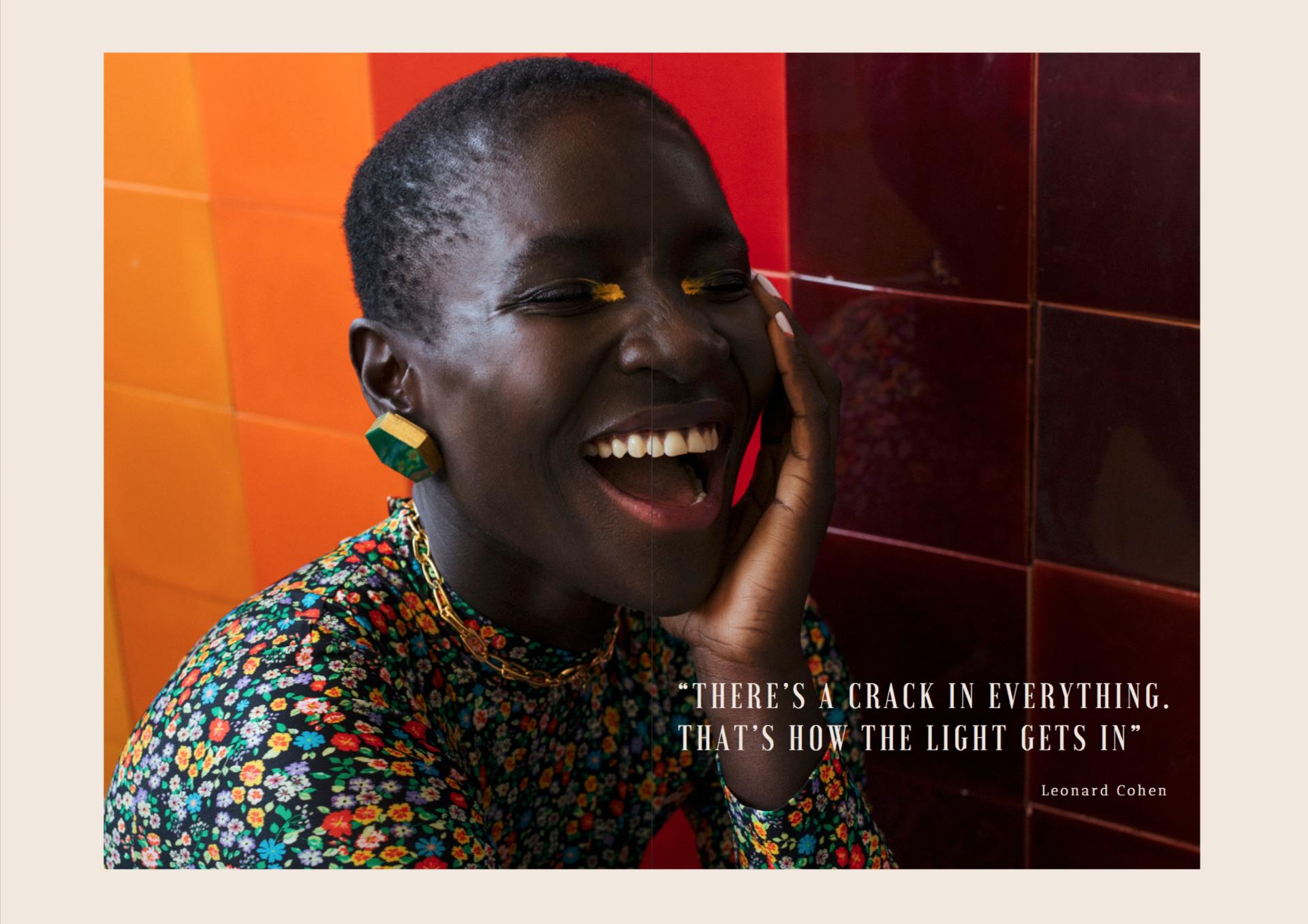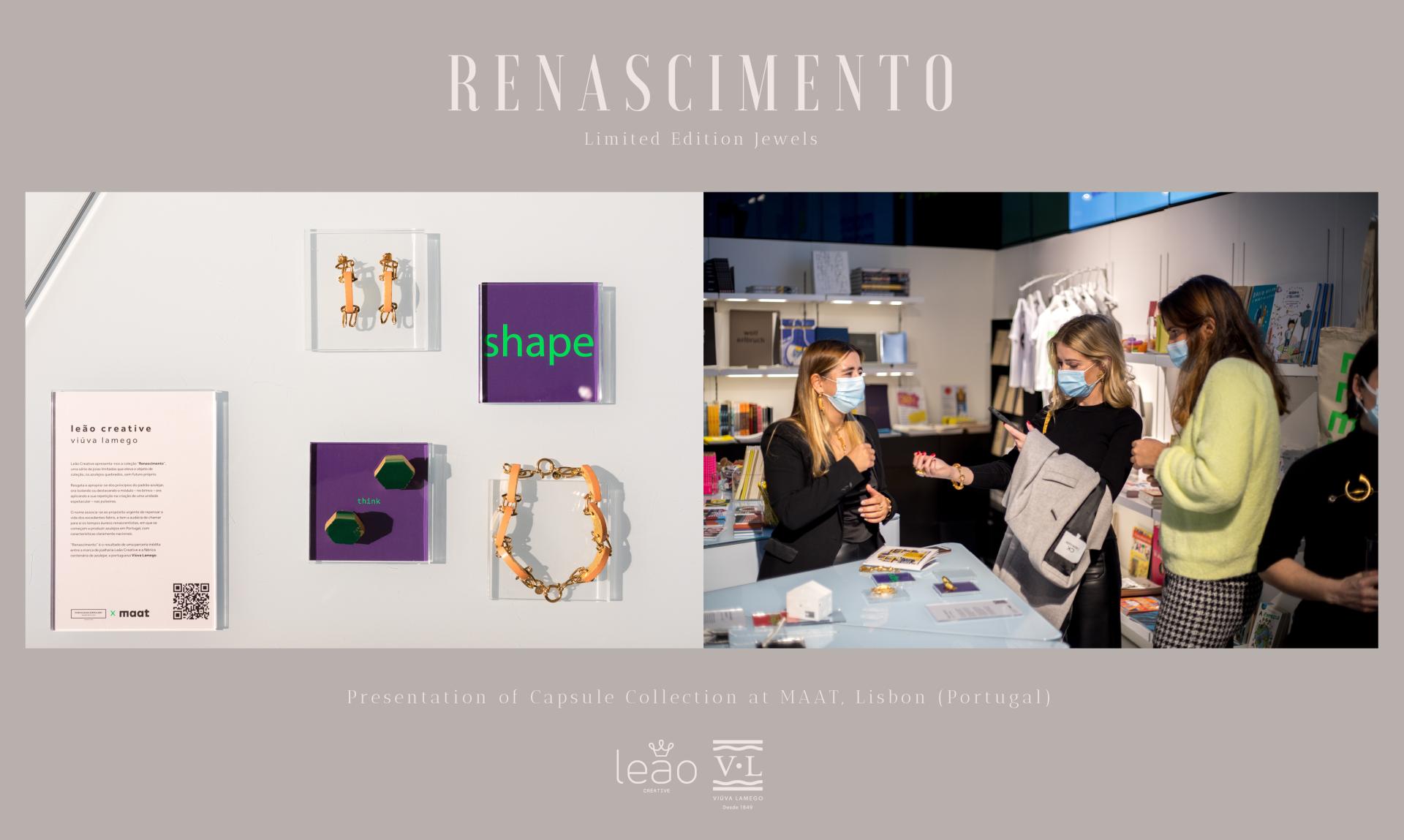Renascimento | Renaissance
Basic information
Project Title
Full project title
Category
Project Description
Series of jewellery that make broken tiles a collector's item. It rescues the principles of the tile pattern, sometimes isolating and highlighting the module – in earrings -, sometimes applying its repetition in the creation of a spectacular unit – in bracelets/necklaces. The name is associated with the urgent purpose of rethinking the life of factory waste, and has the audacity to recall the golden Renaissance times, when tiles began to be produced in Portugal, with national characteristics.
Geographical Scope
Project Region
Urban or rural issues
Physical or other transformations
EU Programme or fund
Which funds
Description of the project
Summary
Renascimento is a jewelry collection with an "open concept", made with broken tiles from the century-old Viúva Lamego factory, with the aim of creating a new value chain:
In new products
- Creating jewelry pieces, in different limited series, with unique characteristics and, therefore, with an intrinsic material, aesthetic and conceptual value, from shards and broken tiles, from momentary productions, manipulated and transformed manually;
On new revenue streams for similar projects
- Promoting more actions with similar characteristics and with the same sustainable purpose, by attributing a percentage of the profits, obtained from the sale of the collection's jewels, to institutions and/or artistic and design projects.
In new creative partnerships and innovation
- Raising awareness next to the different market players (manufacturers and factories, art dealers, exhibitors and designers) to the relevance of upcycling and the importance of creating creative bridges in this sense; and encouraging the public to discover and work constructively on the potential that exists in materials they consider to be just rubbish.
In positioning and visibility
Communicating not only the final pieces created, but the entire co-creation process with Viúva Lamego, allowing to give national and international visibility to the Portuguese artistic, material and ethnographic legacy, showing how our more traditional industries manage to be successful, prominent in their market fields and to reinvent their practices in order to adapt to the needs of the public and the planet; through communication actions – digital and physical, in Portugal and abroad.
Key objectives for sustainability
• Demonstrate that the different economic activities are not solely and exclusively dependent on the consumption of finite resources;
• Develop, together with the different players, cyclical thinking about production and consumption, building processes focused on reuse, transformation, and recycling;
• Achieve more efficient management of natural resources and prolong product value
How?
- Using products and materials that already exist in the economy, and do not come from ecological reserves – in this project, using broken tiles from Fabrica da Viúva Lamego;
- Adding value to existing products and materials, giving new life to manufacturing waste that exists on a large scale, specifically in the Portuguese industry, and can be an example for others. In this case, the broken tiles would have no other purpose or use and, through a new design, through their transformation and treatment, they can now be applied to new pieces of jewelry;
- Also thinking about the remaining elements in a sustainable way: creating partnerships with jewelry manufacturers who can supply me with metal chains and structures, with recycled silver;
- Controlling stocks and production well by selling online or in small series in specific places/actions (which can also give it a greater value in the market) and, whenever possible, make sales with pre-order;
- Showing industries and the public that there is potential in the design of circular products, not only when considering applications of by-products and residues in new final products, but in the perception that the new generation of consumers will have about our business.
Brands that invest and recognize the importance of sustainability and preservation are gaining more and more space in the market. Showing social and environmental responsibility brings practical results in sales and positioning.
Key objectives for aesthetics and quality
- Make known the vast and high quality artistic heritage that Portugal has, in terms of tile production
- Use jewelry as an object for the transmission of sustainability concepts and purposes
- Make the consumer an active player and promoter of this cause, through the empathic and emotional relationship created with the object
How?
Jewelry and Aesthetics, as disciplines, have always been related and have been a mirror of social, artistic and economic evolution in the world. Through an aesthetic object, such as jewelry, we are able to translate beauty and technical dexterity, we can understand time and markets, reflecting the different thoughts in the creation of form and pondering the scarcity of raw materials.
These jewels, therefore, reflect not only its original matrix of very high quality - the tiles, belonging to a wider artistic heritage, such as the Portuguese tile panels -, but also the new purpose, the intention to be more sustainable, the concept and the path that is intended to be taken in terms of sustainability. From the aesthetic experience and its symbology, the user also takes a stand and is an active participant in this cause.
These questions are essential, because the sustainable luxury consumer is increasingly aware and more demanding in terms of the social commitment of brands and how their industrial mode of production takes place in relation to the creative process and aspects surrounding the product, as a whole. The sustainable luxury object must have in itself a symbolic value loaded with emotion and through this, the consumer feels that he enriches his own personal integrity.
Thus, the broken tiles leave the category of waste for a new condition, with the main characteristic of uniqueness. This unique quality is, in general, also the most desired by professionals in the field of jewelry and by some jewelry consumers.
Key objectives for inclusion
- Show that the industry is available for co-creation and to welcome designers/other creatives to work together and, with that, design new projects and solutions to produce new products, from factory waste
- Helping to build new creative bridges between different industries and artists, who are interested in developing similar projects, through our network of contacts
- Promote Portuguese art, design and creative businesses: jewelry, tile design/production and fine art.
- Promote the Portuguese material & ethnographic legacy locally and globally, through the storytelling of the tradition of tile making and how it evolved;
- Give part of the profit, from the pieces sold, to foundations or art related projects in order to benefit them financially and in order to promote more events/works/ideation with sustainability in mind - the money provided to the entities should be specifically used in projects of this kind;
Physical or other transformations
Innovative character
A jewel is an object with an intrinsic aesthetic quality. It is transportable, tells a story and/or conveys concepts in a concrete and palpable way – therefore, it helps to create greater proximity and relationship between brands and the public.
Furthermore, it is an object that is thought to be treasured and to be durable, passed on from generation to generation – prolonging the life of the product, which is the basis of the sustainable and circular economy.
In this project, the jewels are versatile (the same modules can be transformed into bracelets, earrings or necklaces) and, due to their typologies and dimensions, they are designed to serve all people, because they do not depend on specific sizes. In this way, stock control is facilitated and reproduction is managed more consciously.
Despite being collectible objects and produced in small series, the jewels from the Renascimento collection can be purchased by a wide audience as they have a relatively affordable price. This factor also helps many people to become promoters/ambassadors of the purpose of sustainability, by using them.
Furthermore, this is a scalable and replicable project, and can grow into product design collections or other art objects, engaging a larger community of artists and industry, as well as a wider audience.

